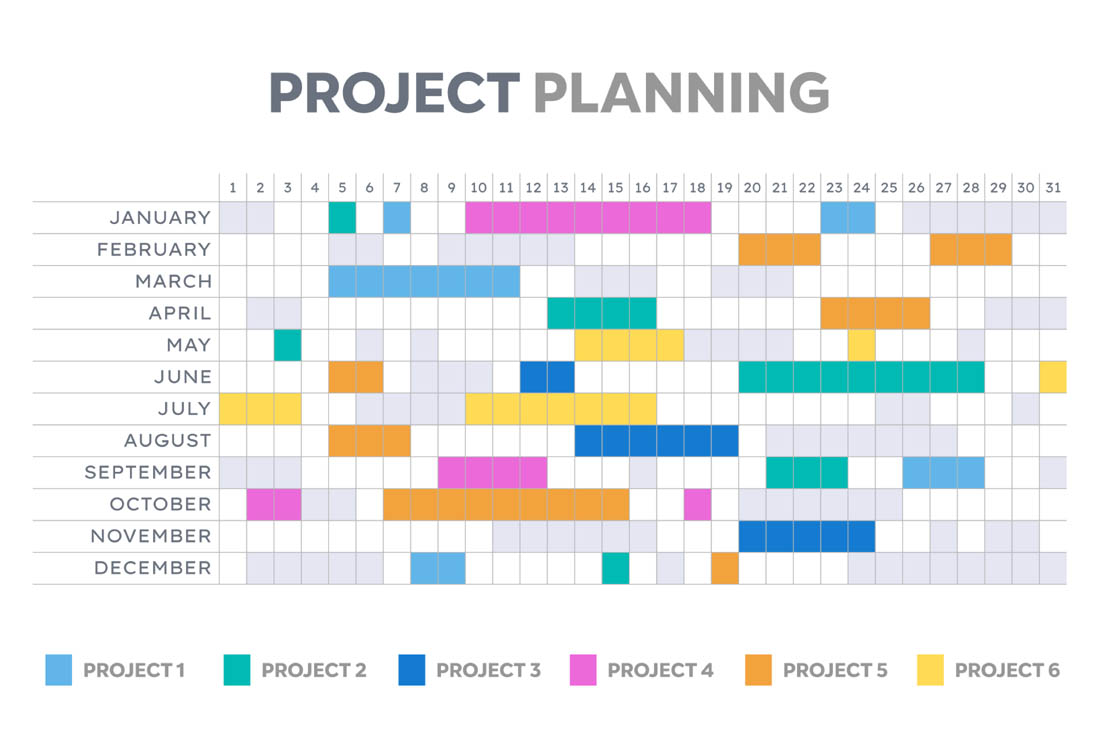What is a hybrid work policy?
A hybrid work policy clearly delineates expectations, maximizes the benefits of both in-person and remote work and helps your employees work better.
Why are hybrid work policies important?
Designing and documenting a hybrid work policy to meet the unique needs of your organization streamlines the transition from other operating models and provides clear guidance for employees.
At ActivTrak, we believe in empowering employees to do their best work no matter where they are, and that means staying up to date on the future of hybrid work.
The range of flexible work arrangements — from hybrid work to remote work to free-address workplace strategies — continues to expand as companies explore next steps. However, remote work isn’t the best option for everyone. The prevalence and popularity of remote work exploded, by default, during the pandemic. For some organizations, including ActivTrak, a remote-first strategy and culture is the best, most sustainable approach for long-term success.
It’s important for C-suite executives and managers to remember there is no one-size-fits-all approach and the future of work warrants a more thoughtful and strategic exploration of their organization’s specific needs. To best support employees’ evolved expectations with critical business needs, some may consider a hybrid approach to let them divide their time between a formal workspace and the location of their choice.
What is a hybrid work model?
Hybrid work is a flexible work model where employees work partially in the physical workplace, and partly remotely. Employees have more flexibility to get work done when and where they’re most productive.
Hybrid work offers varying degrees of flexibility and employee Choice
Hybrid work arrangements have been around, often informally, for decades. In a hybrid work operating model, employees are free to get work done in whichever work environment helps them be most productive, with varying degrees of flexibility and choice. With support from their manager, some employees might decide that remote-only is the best option for them, while others might find that working in a designated office setting away from distractions at home is key to getting the most out of the workweek.
Perhaps employees prefer to pop into the office 2 or 3 days a week to see coworkers or attend an important meeting. It’s about offering a variety of work options to support flexibility. All while empowering employees to create a work-life balance that works for them and their well-being — without impacting performance.
The benefits of creating a hybrid work policy
There are a number of benefits to hybrid work arrangements, for both businesses and employees. These include:
- Increased productivity: Hybrid work can improve employee productivity in many ways. It cuts down on commute times so employees have more time to be productive. It also allows employees the freedom to choose where they would be most comfortable and productive working. Keeping employees feeling safe and healthy is important to the well-being and productivity of your staff.
- Better work-life balance: Work-life balance is essential for employee well-being and a healthy work environment. When employees have control of their schedule and can decide when they’re commuting and when they’d rather stay home, they feel empowered to make the best choices for their own well-being, engagement and productivity. Happier employees are also more likely to stay at your company, which is better for retention and your human resources department.
- Access to deeper talent pools: Many people are accustomed to the perks of working remotely. By offering a hybrid model, businesses can expand the talent pool they choose from to include those from a larger geographical area and who might not be able to commute or aren’t interested in working in an office space every day.
The benefits of hybrid working are often underestimated. While it may seem like remote work is the ideal default option, data provides a more nuanced and realistic perspective. A recent Accenture survey found that 83% of respondents would prefer a hybrid model where they could work remotely at least 25% of the time. 68% of Americans say that a hybrid work model is their ideal arrangement and interestingly, the majority of Gen Z employees (to the tune of 74%) want the option to work onsite.
These statistics show that the future of work isn’t necessarily one where everyone works remotely full-time, but it will be one that includes flexibility. C-suite executives, managers and team leaders must consider this evolving approach and put as much effort into documenting and distributing a hybrid work policy as they do other work-related initiatives.
The Challenges of a Hybrid Work Model
As with any way of working, hybrid work arrangements have a number of challenges, especially in the absence of a formal policy.
1. Lack of clarity
With employees shaping their ideal work environment, it can be challenging to get your team members on the same page. How many days in the office differentiate a remote worker from a hybrid worker from an in-office worker? Will hybrid workers receive a smaller work from home allowance because they’re spending fewer days at home? Do employees have to inform their managers when they’ll be coming in, or do they have unlimited access to the space? These are all important questions that shouldn’t be left to the last minute.
2. Productivity pain points
Hybrid employees struggle with the same productivity pain points as remote employees — with burnout, focus and disruptions at the top of the list. Working from home can quickly blur the lines between work hours and personal time. As the workday extends beyond traditional hours, it’s not uncommon for employee well-being to suffer and burnout rates to increase. Businesses can use productivity metrics as helpful insights to track, manage and support their hybrid work employee performance.
When your home and your workspace are the same, personal distractions like checking social media, doing chores in between checking emails, or taking care of family make focusing on job duties harder than ever and can impact performance. Suddenly, your day isn’t divided into clean blocks of work hours and personal hours — it all blends together. While some challenges might be mitigated when employees choose to go to the office, others like drains on their time and focus from commuting can come into play.
The transition to hybrid or remote work can be difficult for managers, who may feel that they lack visibility into team members’ productivity if they can’t see them carrying out their work in the office. But the reality is, workforce analytics can actually provide much more meaningful insights into employees’ work habits than occasionally looking over their shoulder when passing by their desk. No matter where employees work, managers can identify when work habits deviate from the norm and take steps to resolve potential issues that might otherwise go unnoticed.
3. Communication and collaboration
A challenge of the hybrid work model is that some workers prefer to communicate with their colleagues more quickly and efficiently in a shared workplace setting. Especially when confronted with the idea of collaborative work, staff members may experience difficulties with communication when working remotely. New or training staff members may feel left behind if they are not sure how to answer work-related questions.
Unclear direction can be especially harmful to the productivity of a workplace when employees are doing hybrid work. Employers should identify the difficulties their employees may encounter and support them through adapting the hybrid work process.
How To Create a Clear and Comprehensive Hybrid Work Policy
Effectively managing a hybrid team can pose a challenge. The key to mitigating these pain points is to have decision-makers come together to create a hybrid work policy. This document should clearly outline your company’s expectations and responsibilities of all hybrid workers and give structure and standards to the hybrid work model. Also, the hybrid work policy should explain how workforce productivity analytics will factor into this model.
All employees — no matter where they are — can benefit from the data-driven insights pulled from a workforce analytics solution. The hybrid work policy is your chance to make monitoring and productivity improvement integral to your enterprise from the very beginning. All while setting a foundation for a culture of continuous productivity improvement.
What should your hybrid work policy include?
Much like a remote work policy, your hybrid work policy should lay out the guidelines and best practices for your new hybrid operating model and answer any questions your team members might have about the arrangement.
The policy should outline eligibility criteria for hybrid work and what the expectations of a hybrid employee are. This includes how many hours they’re expected to work each day, what those hours are, and if and when they’re expected to come into the office. In the spirit of transparency, it’s a good idea to provide any context that went into making the decisions. For example, if you used ActivTrak’s Location Insights to understand the impact of location on employee productivity and work habits, share that data. Or if you used ActivTrak’s Impact Analysis to run a workplace A/B test to determine how work location affects productivity and engagement, and those results influenced your policy, communicate that information. Knowing policies are rooted in data, employee feedback and more can go a long way in getting employees to “buy in” on the work policy you decide on. It’s also important to include a section with key resources your employees may need as they adapt to this hybrid environment.
Context and resources enable you to streamline the transition and ensure business needs and employee needs are successfully addressed from the outset. If there are additional responsibilities employees need to take on when at home or in the office, make that clear. The more answers you can provide upfront, the stronger and more effective your hybrid work arrangement will be.
To guide you through this process, we’ve created a hybrid work policy template to help you define your own policy. A comprehensive policy can help strengthen in-person and virtual communication, streamline digital processes and develop hybrid management strategies.
About ActivTrak and The Productivity Lab
ActivTrak helps employers and employees work better together to realize their full potential. Our workforce analytics cloud provides visibility and insights across people, processes and technology to help organizations inform key decisions and optimize outcomes. Leveraging these innovations, the ActivTrak Productivity Lab is a global center for productivity research and expertise, committed to helping organizations evolve, embrace and embody the future of work. More than 9,500 customers trust ActivTrak, which has been recognized by the Deloitte Technology Fast 500, Inc. 5000 and Brandon Hall Excellence in Technology award. Founded in 2009, and based in Austin, Texas, ActivTrak is backed by Sapphire Ventures and Elsewhere Partners.





